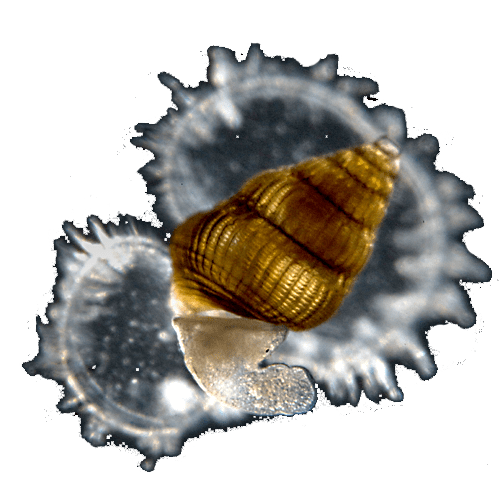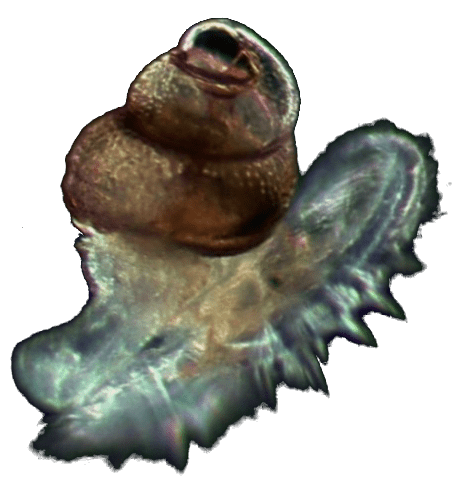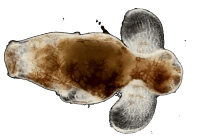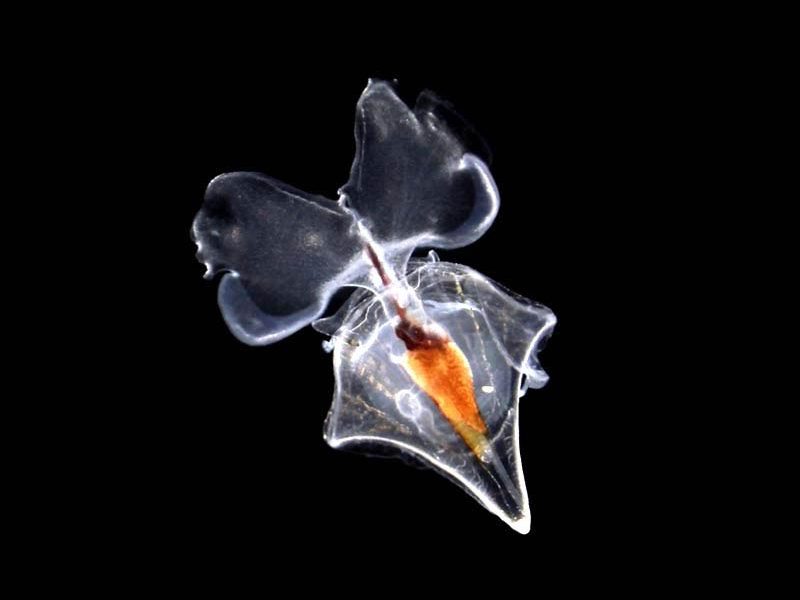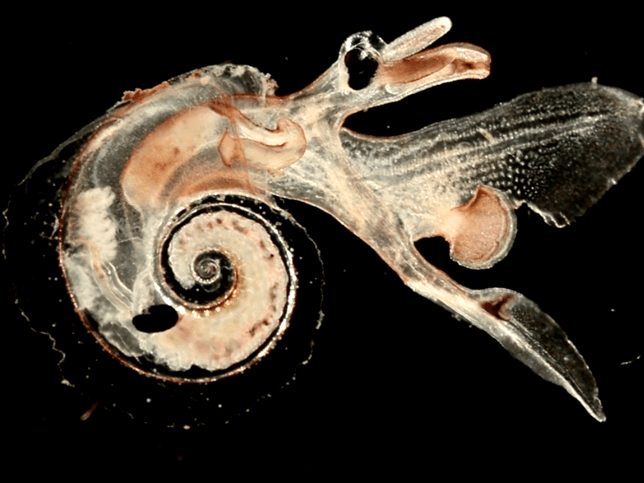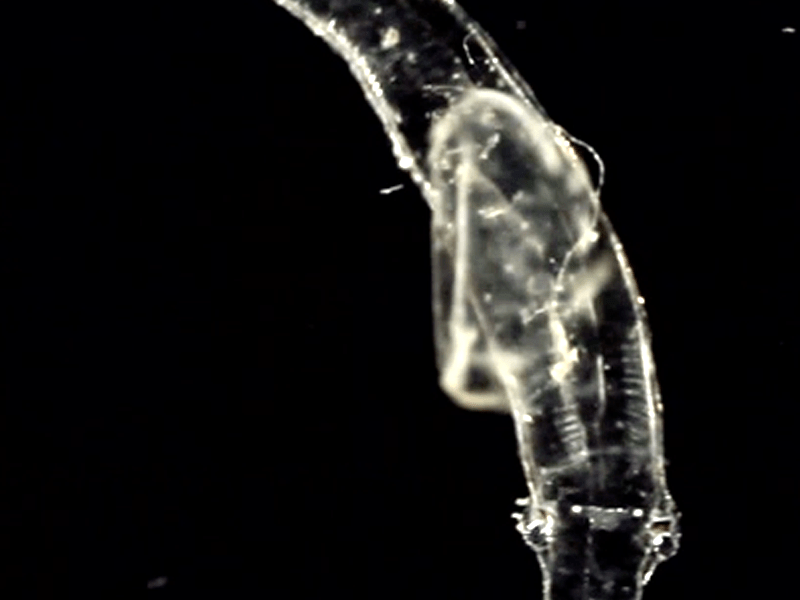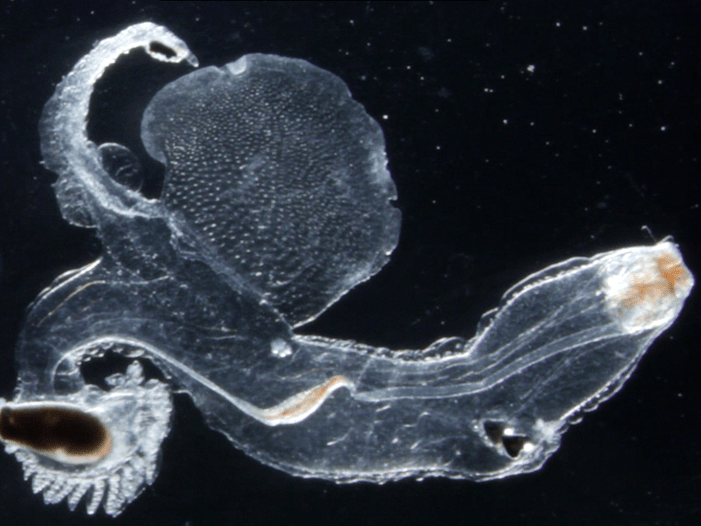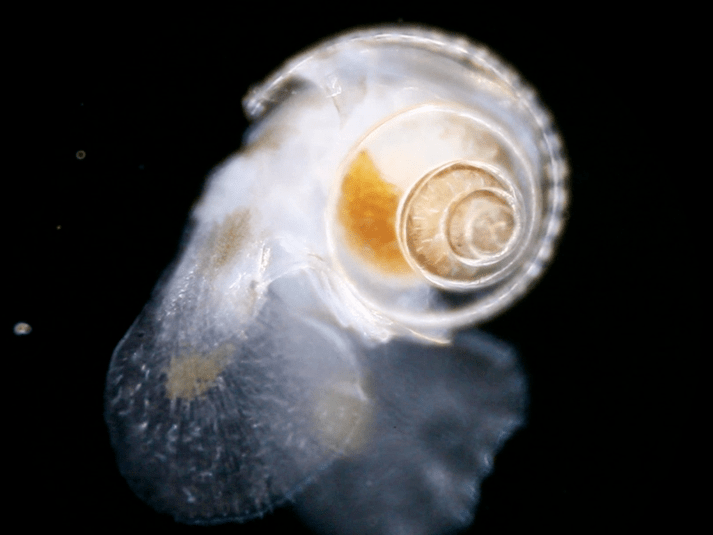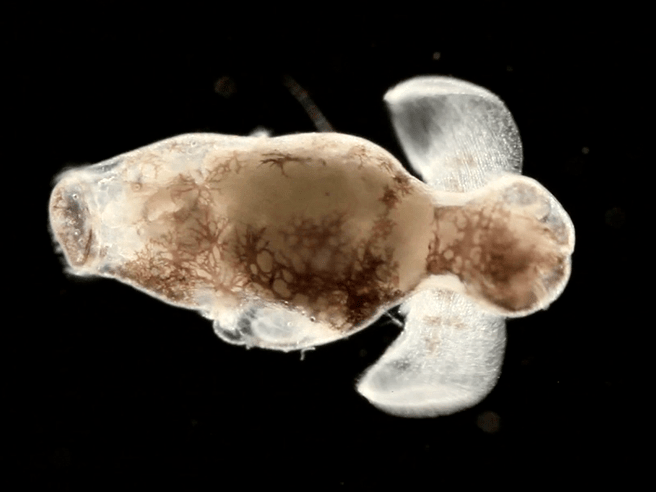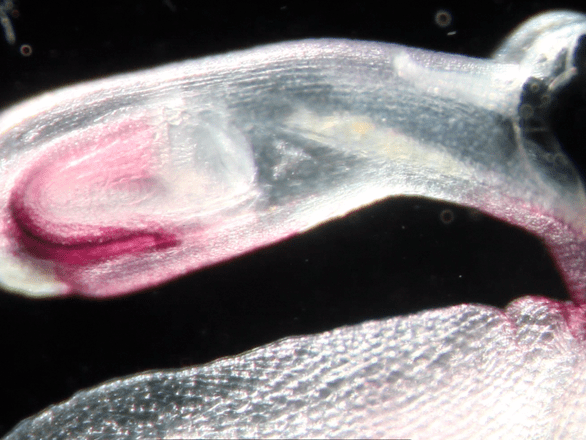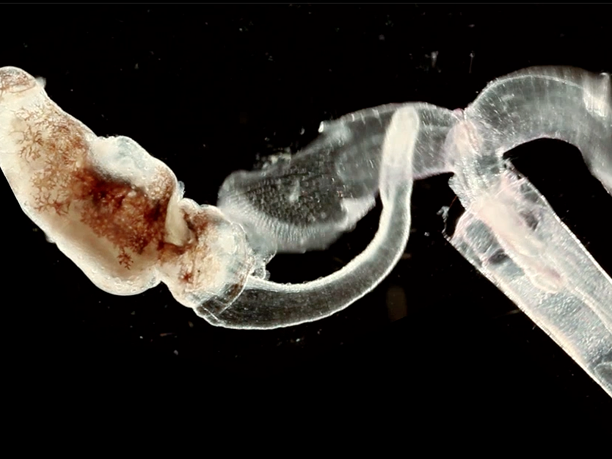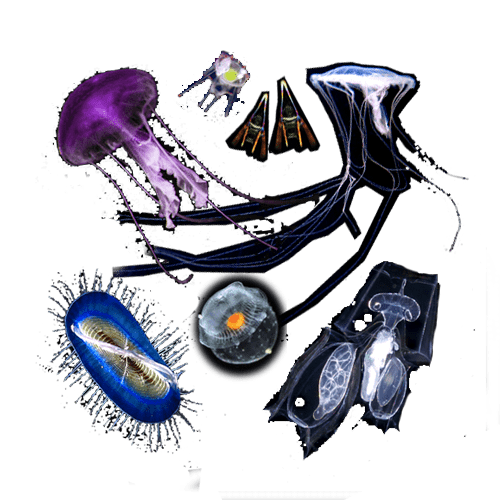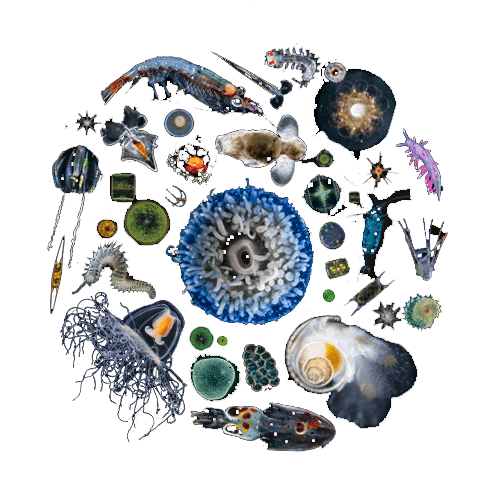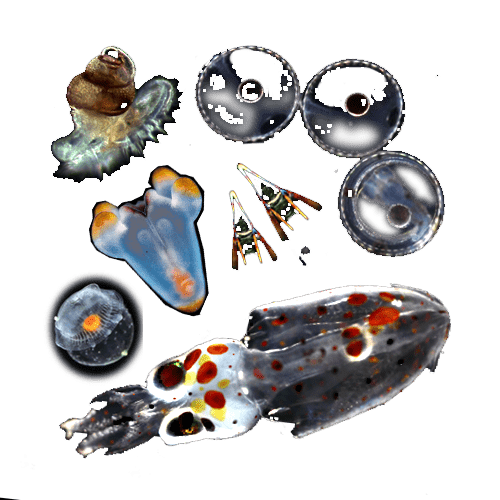Photos
Narration
Atlanta is a completely transparent planktonic mollusk. You can easily see its heart beating, its bronchial tubes breathing, its intestines, its reproductive organs, its shiny black eyes and wing-shaped foot.
Atlanta belongs to the heteropoda and pteropoda family of mollusks. Ptero stands for wing and pod for foot. Also called sea butterflies, these snails use their feet as wings for swimming. There are many different species measuring a few millimeters to several centimeters. Pteropod mollusks have two wings on either side of a soft body, sometimes protected by a shell.
Some pteropod mollusks are voracious predators that go as far as cannibalism. Gymnosomes for example can latch onto their cousins, the graceful Creseis, and extend their trunk right into the shells of Creseis to suck out their prey.
It’s not a good time to be a pteropod. Not only are they the favourite prey for fish but since human activities are causing the oceans to become more and more acidic, pteropod mollusks find it hard to produce their calcareous shell. Are they doomed to extinction?
Share this on
Production
CNRS Images
Original Idea
Christian Sardet
Director
Noé Sardet
Scientific consultant
Claude Carré
Texts
Christian Sardet, Sasha Bollet
Images
Christian Sardet, Noé Sardet, Sasha Bollet
Editing
Nicolas Mifsud
Sound mix
Thomas Huguet
Voice
Nick Storey
Director of production
Véronique Kleiner
Production assistant
Céline Ferlita
Creative Commons Licence :
Attribution Non-Commercial
No Derivative

